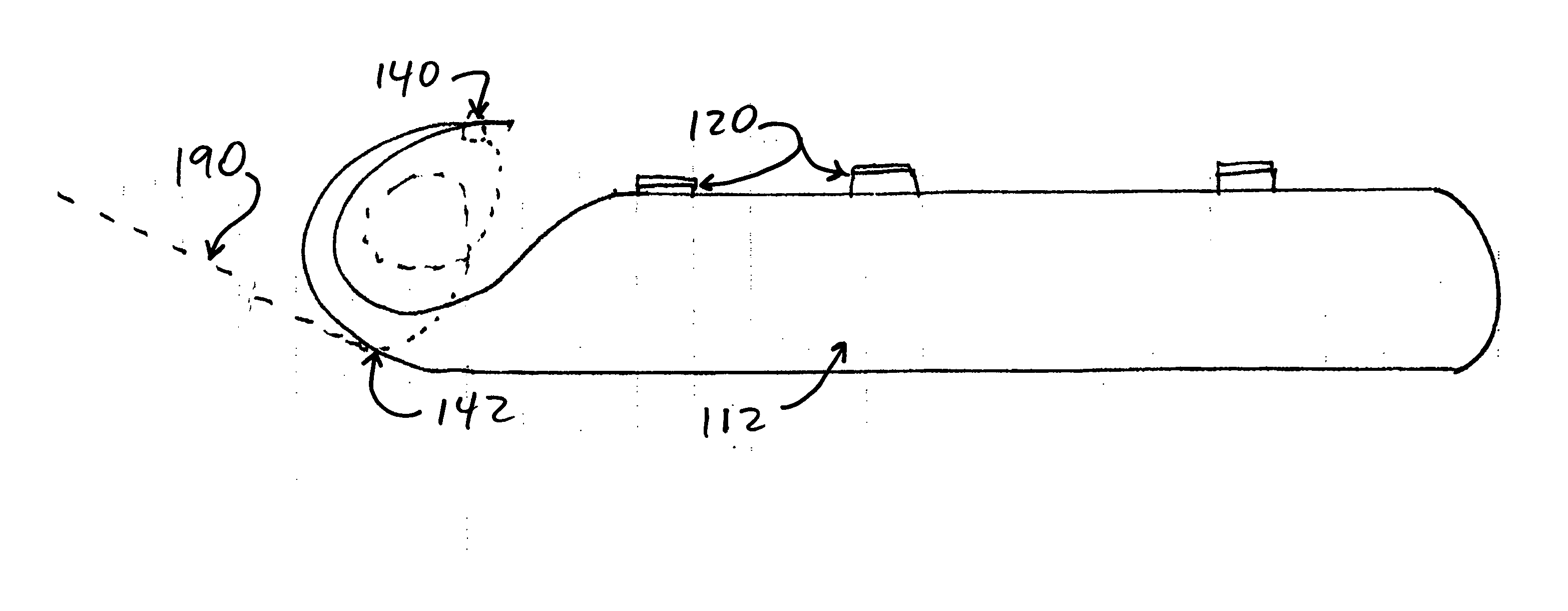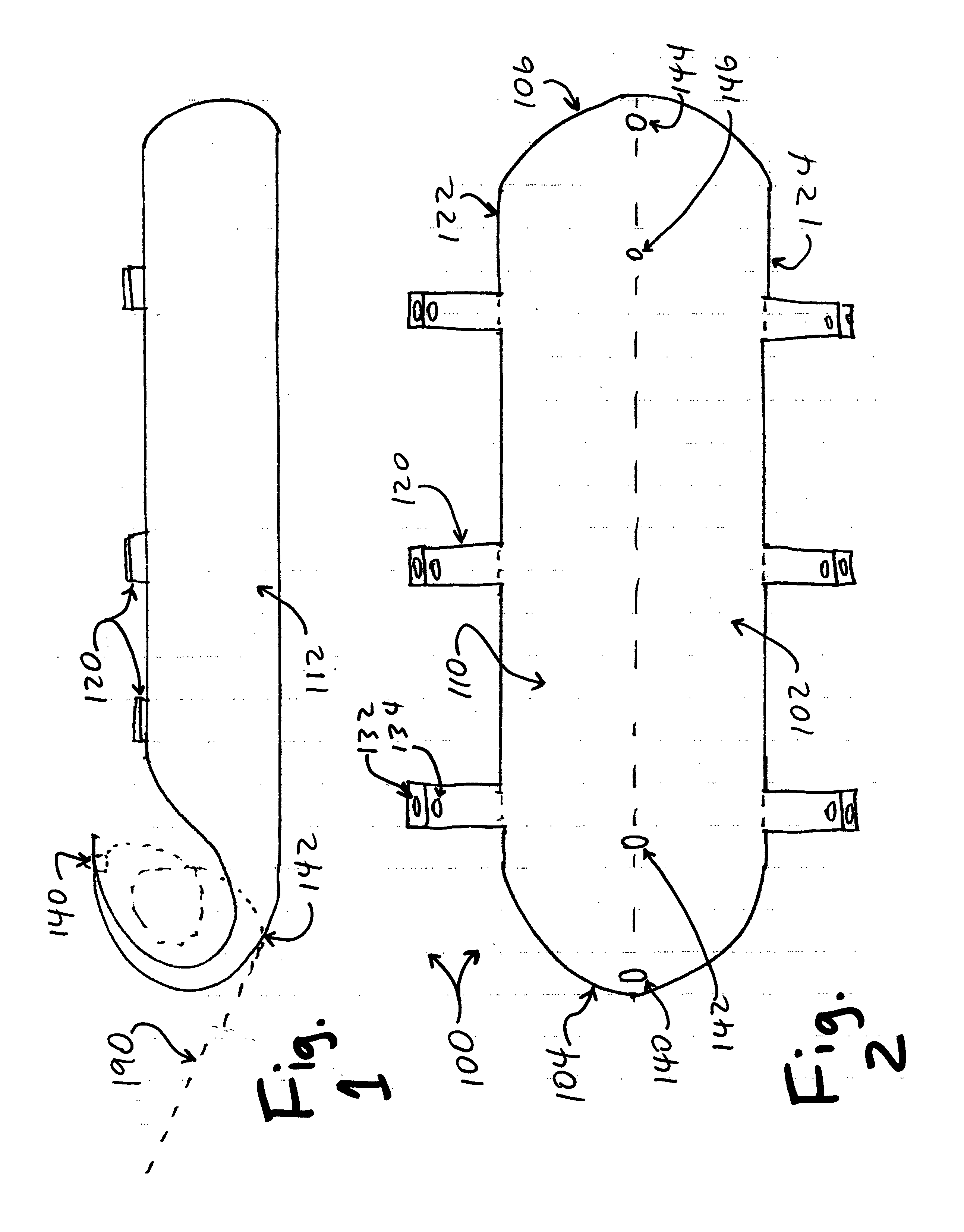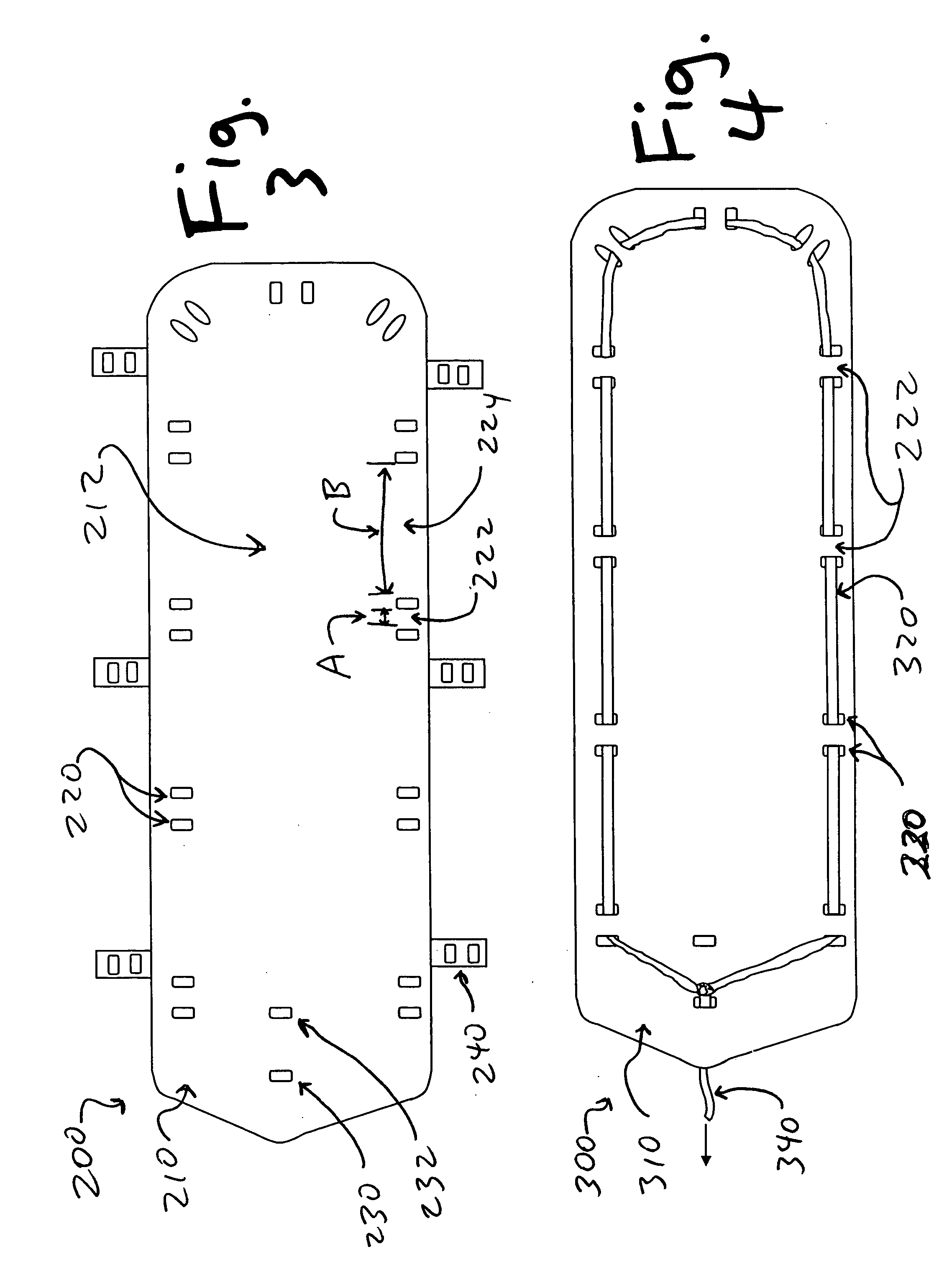Lightweight plastic sleds for emergency transport and hauling of loads
a lightweight, sled technology, applied in the direction of children's carriage/perambulator, transportation and packaging, carriage/perambulator accessories, etc., can solve the problems of serious fatigue in the rescuer(s), insufficient devices for hauling and no hunter wants to go dragging and pulling that type of sled for miles through the forest. , to achieve the effect of reducing size and weight and weigh
- Summary
- Abstract
- Description
- Claims
- Application Information
AI Technical Summary
Benefits of technology
Problems solved by technology
Method used
Image
Examples
Embodiment Construction
[0029] In one preferred embodiment of this invention, illustrated in FIG. 1 (side / elevation view) and FIG. 2 (top / plan view), callout number 100 indicates a lightweight sledding device, made primarily from sheet 102 of moderately thick and tough but flexible material. This class of sled 100 is designed mainly for dragging non-human loads (such as a load of firewood, a deer carcass, etc.) across rough or uneven terrain. For convenience, this type of sled is referred to herein as an “ultra-light sled”, and is described below under the subheading, “Ultra-Light Sleds with No Peripheral Straps”.
[0030] After this type of sled was developed and tested, the Inventors recognized that it could be enhanced in ways that provide greater strength and adaptability, to a point of enabling a new and different use, for emergency, rescue, or similar transport of people who have been wounded, injured, etc. For convenience, this type of enhanced and strengthened sled is referred to herein as a “rescue ...
PUM
 Login to View More
Login to View More Abstract
Description
Claims
Application Information
 Login to View More
Login to View More - R&D
- Intellectual Property
- Life Sciences
- Materials
- Tech Scout
- Unparalleled Data Quality
- Higher Quality Content
- 60% Fewer Hallucinations
Browse by: Latest US Patents, China's latest patents, Technical Efficacy Thesaurus, Application Domain, Technology Topic, Popular Technical Reports.
© 2025 PatSnap. All rights reserved.Legal|Privacy policy|Modern Slavery Act Transparency Statement|Sitemap|About US| Contact US: help@patsnap.com



